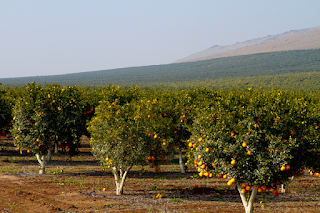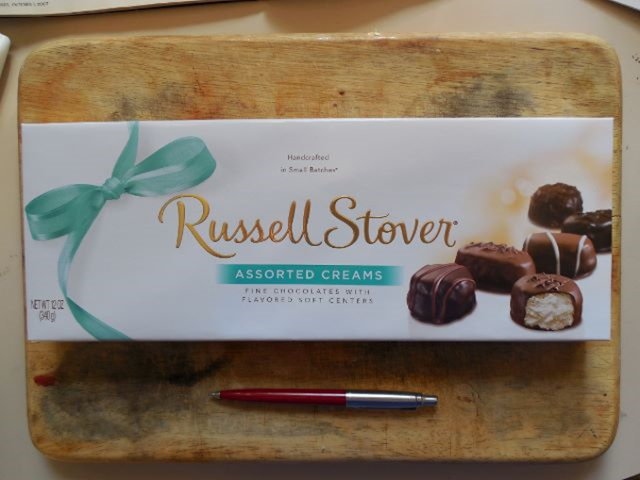To All,
While poking around at Whole Foods, a new fruit hove into view that was labeled as a Mandarin Sumo Tangerine (PLU # 3632). It really caught the eye since it has a quince-like topknot. The generic name for this fruit is Shiranuhi, which refers to the region in Japan where it was developed. In Japan its trademarked name is Dekopon. When the fruit was brought to the U.S., the marketeers thought that "Dekopon" would not appeal, so it was given a variety of names such as Mandarin Sumo Tangerine and Sumo Citrus.. The name has not yet stabilized, but "Sumo" is the key word. The marketeers picked this name since this is a large, round fruit and since its topknot is reminiscent of the hair style worn by sumo wrestlers. Is this the only fruit named for a hair style? Whole Foods was charging $2.99/pound; since mine weighed 0.93 pounds, it cost $2.32. (In comparison, a cara cara of the same weight costs $1.25.) This is bigger than all of the citrus fruits I have reported on except for the pomelo (19 Oct 2104), the uniq (17 Jan 2014 and 27 Jan 2015), and some of the cara caras (8 Feb 2015). (To my astonishment, Whole Foods does not have the highest price. The New York Times reported on 21 Feb 2012 ,"Sumo Citrus are sold at Whole Foods for $2.99 a pound; Gourmet Garage, $3.99 a pound; Eataly, $5 a pound.")
This fruit is not a natural product. It has been developed in Japan over the last 30 years by crossing a satsuma mandarin (25 Jan 2015) and a navel orange. The design goal of this effort was to develop a fruit that was as easy to peel as a tangerine but as big and juicy as a navel orange. The topknot is considered unsightly, but breeders have not yet managed to get rid of it. I like it since it gives this fruit a distinctive look; I beseech the breeders to let it alone. This is the rare fruit that is not best when fresh; to make it more palatable it needs to age for about 30 days after being picked to let the citric acid level decrease and the sugar level increase. Because this fruit is low in citric acid, it is the citrus fruit of choice for those with sensitive stomachs. It is now grown in California and has been available nationwide only since 2012.
"Tangerine" appears in the name of this fruit. Initially this seems like a misnomer because it does not display the tininess usually thought to be a characteristic of tangerines. What makes this name plausible, however, is its loose skin, which one usually associates with tangerines and elephants. Also, it seemed even more tangerine-like when my bare hands peeled it with great ease. The white layer that is so annoying in a pomelo and that sometimes gets in the way when you peel an orange is almost completely absent in the sumo tangerine. Here are pictures of my sumo tangerine.
The wedges looked orange-like, and I popped several into my mouth in quick succession. They were plump, extremely juicy, and of an appealing sweetness; when I bit down I got a burst of refreshment. I did not detect any tangerine flavor; in fact, I could detect little flavor at all. Even so, it was very pleasing to eat them. We have here a paradox in that this fruit tastes really good even though it has little or no flavor. Mine had no seeds.
The verdict: This fruit is fun both to look at and to eat, and it is very easy to prepare. At $2.99/pound, however, it is quite expensive, and regular oranges and tangerines are good substitutes (unless you have a sensitive stomach) that cost far less. If you are painting a still life, buy this fruit. If you are feeding a gang, go with oranges. In short, the original design goals of ease of peeling, large size, and juiciness have been met; now they need to work on getting the price down.
The tree is a hybrid designed by man rather than nature, so the details of the tree are of only minor interest, but here are a few pictures.
Because this is a relatively new fruit, it has not yet spawned much in the way of either commercial or home-made products. You might try a recipe for sumo tangerine cheesecake or sumo citrus fudge.
Without much time for this fruit to penetrate the world of art, very little artwork has made use of it.
Here's your party tip. This fruit was clearly named by someone from Japan, where they worship sumo wrestlers. In this country, in contrast, sumo wrestlers are thought of as gross and uncouth, so the current name discourages consumption by the refined. Therefore, for this fruit to take off in the U.S., it needs a new name. Ask your guests to walk a mile in their enemy's shoes and imagine that they are marketeers who are charged with coming up with an appealing name for this fruit. The following facts should be kept in mind.
- This fruit can be called an orange or a tangerine. Since the tangerine is so closely related to mandarins and clementines, these two names could also be used, but keep in mind that these would cause a clash since they imply smallness.
- Its most striking characteristic is its topknot, so a winning name should make good use of this visual high point.
- Gustatorily, its most appealing point is its extreme juiciness.
- It is a large orange. Don't fall into triteness and call it a Texas orange.
- It is not perfectly round, even aside from the topknot, and its coloring is not uniform, so a good name would turn these imperfections into a strong point.
- You can exploit the fact that this fruit originated in exotic Japan. (This foreign origin can be ignored or even twisted if good marketeering requires.)


































































